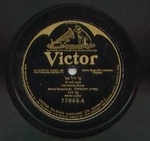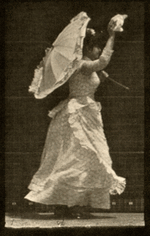-
MAGNUM
Two years after the apocalypse that was called the Second World War ended, Magnum Photos was founded. The world's most prestigious photographic agency was formed by four photographers - Robert Capa, Henri Cartier-Bresson, George Rodger and David "Chim" Seymour - who had been very much scarred by the conflict and were motivated both by a sense of relief that the world had somehow survived and the curiosity to see what was still there.
They created Magnum in 1947 to reflect their independent natures as both people and photographers - the idiosyncratic mix of reporter and artist that continues to define Magnum, emphasizing not only what is seen but also the way one sees it.
"Back in France, I was completely lost," legendary photographer Henri Cartier-Bresson explained in an interview with Hervé Guibert in Le Monde. "At the time of the liberation, the world having been disconnected, people had a new curiosity. I had a little bit of money from my family, which allowed me to avoid working in a bank. I had been engaged in looking for the photo for itself, a little like one does with a poem. With Magnum was born the necessity for telling a story. Capa said to me: 'Don't keep the label of a surrealist photographer.
Be a photojournalist. If not you will fall into mannerism. Keep surrealism in your little heart, my dear. Don't fidget. Get moving!' This advice enlarged my field of vision."
Englishman George Rodger, another of Magnum's founding photographers, recalled how his colleague Robert Capa, the agency's dynamic leader, envisioned the photographers' role after World War II, which had itself been preceded by the invention of smaller, portable cameras and more light-sensitive film: "He recognized the unique quality of miniature cameras, so quick and so quiet to use, and also the unique qualities that we ourselves had acquired during several years of contact with all the emotional excesses that go hand in hand with war. He saw a future for us in this combination of mini cameras and maxi-minds."
 Capa with Rodger, 1943, Italy, Naples, © Magnum Photos
Capa with Rodger, 1943, Italy, Naples, © Magnum Photos FRANCE. Paris. 1947. Chim, Capa and Bischof. ©Magnum Photos
FRANCE. Paris. 1947. Chim, Capa and Bischof. ©Magnum Photos“We often photograph events that are called 'news' , " Cartier-Bresson told Byron Dobell of "Popular Photography" magazine in 1957, "but some tell the news step by step in detail as if making an accountant's statement. Such news and magazine photographers, unfortunately, approach an event in a most pedestrian way. It's like reading the details of the Battle of Waterloo by some historian: so many guns were there, so many men were wounded - you read the account as if it were an itemization. But on the other hand, if you read Stendhal's Charterhouse of Parma, you're inside the battle and you live the small, significant details... Life isn't made of stories that you cut into slices like an apple pie. There's no standard way of approaching a story. We have to evoke a situation, a truth. This is the poetry of life's reality."
China. 1948. Henri Cartier-Bresson ©Magnum Photos
 Tags : that, would, magnum, photographic, capa
Tags : that, would, magnum, photographic, capa
Dona Rodrigue











